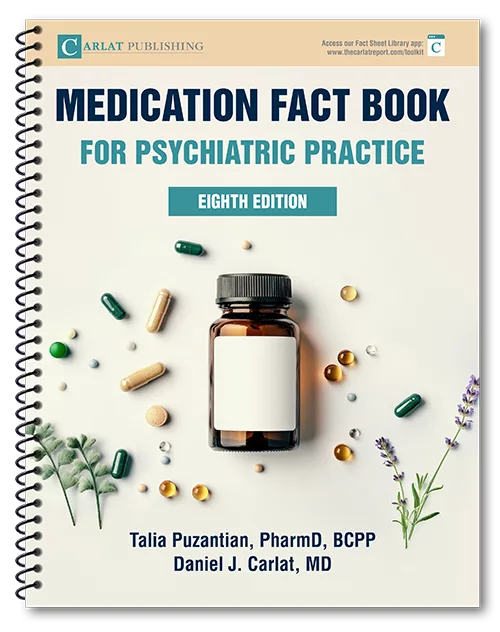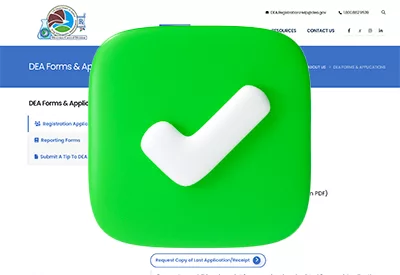Home » Light Therapy for Depression: Does it Work?
Light Therapy for Depression: Does it Work?
October 1, 2006
From The Carlat Psychiatry Report
How convincing is the evidence that light therapy actually works?
The pace of research on bright light therapy has accelerated over the last few years, and recently, two meta-analyses of this research have been published, one in the American Journal of Psychiatry (2005;162:656-662), and the other in the web-based Cochrane Library (http://www.cochrane.org/reviews/en/ab004050.html). We’ll look at the AJP study first, and then point out a few differences in the Cochrane analysis.
The AJP reviewers began by noting that, unlike in pharmaceutical research, there is little funding available for light therapy research, resulting in relatively small studies that often do not include adequate control groups or outcome criteria.
Creating a control group is particularly challenging in studies of light therapy. One option is to simply randomize patients to either light therapy or no treatment, but any differences between groups could be due to the placebo effect rather than a specific therapeutic effect of light. You need some type of double-blind, placebo control in order to prove that light therapy is effective. But how do you create a “dummy” light box? Researchers have tried different techniques, including assigning placebo patients to red light or negative ion generators. The most popular technique is assigning control patients to a low intensity lamp—usually no higher than 300 lux, as opposed to a range of 1,500-10,000 lux for treatment groups. The problem is that when these studies show no treatment-placebo differences, light therapy boosters can claim that the low intensity light nonetheless may have been intense enough to have been an active treatment.
At any rate, the AJP article set the methodologic bar very high in their meta-analysis, and ended up including only 20 studies out of 173 initially reviewed. Eight of these studies were of light therapy for seasonal affective disorder (SAD), five were of dawn simulation for SAD (an early morning version of light therapy in which the intensity gradually increases), three were of bright light for nonseasonal depression (regular DSM-4 major depressive disorder), and five were of adjunctive bright light for nonseasonal depressed patients already on antidepressants.
The researchers did their statistics and reported the average of the effect sizes for each category of light therapy research (see Table). What do these numbers mean? “Effect size” is a statistical way of quantifying how much of a difference there is between the treatment group and the placebo group. Basically, you subtract the Hamilton depression score of the control group from that of the treatment group. This number itself is not reliable, because there is often a great deal of variability in the patients’ individual Ham-D scores, and the more extreme this variability, the less confidence we have that the average Ham-D scores are valid. Statisticians have a neat formula to quantify the degree of variability, which I won’t reproduce here because I don’t have the heart to expose my readers to square roots. You can educate yourself more by reading the excellent lecture notes from the University of Colorado, at http://web.uccs.edu/lbecker/Psy590/es.htm.
At any rate, if you take the raw difference between treatment group scores and placebo group scores, then divide by this measure of variability, you end up with the official “effect size.” Most researchers consider effect sizes of 0.2 to indicate a small effect, 0.5 a medium effect, and 0.8 or greater, a large effect. Thus, the 0.84 effect size of light therapy for SAD implies a large, robust effect. Light therapy works!
But does it work for regular, nonseasonal depression? The authors reviewed three studies of light therapy for nonseasonal depression, reporting an average effect size of 0.53—a medium effect, which is similar to results seen in antidepressant medication trials. The implication is that you can expect bright light therapy to work as well as medication therapy in nonseasonal depression. However, this result is based only on an averaging of three studies, and there have been no published head-to-head trials comparing the two treatments for nonseasonal depression. The closest we’ve seen is a recent trial comparing bright light with fluoxetine in SAD; the results were encouraging for light therapy proponents, as there were no significant differences between the treatments in either remission or response rates, and light therapy worked more quickly than fluoxetine (Am J Psychiatry 2006;163:805-812).
What we’d really like to hear is that light therapy works as an augmenter of antidepressants. We need this especially badly now, after we’ve all absorbed the disappointing results of NIMH’s STAR-D trials. Recall the overarching conclusion of STAR-D: You can augment till the cows come home, but no more than about a third of the initially resistant patients will get better (NEJM 2006;354:1243-1252; Am J Psychiatry 2006; 163:1519-1530).
Unfortunately, adjunctive light therapy appears to be ineffective. The authors reviewed five high quality studies of light therapy used as an adjunct to antidepressant treatment for regular depression. There was no indication that this was helpful (average effect size is -0.01).
But wait! Controversy is a-brewing here, as the AJP’s lackluster take on adjunctive light therapy elicited a letter from the authors of the Cochrane Library’s review (Am J Psychiatry 2006; 163:162-163). The Cochrane meta-analyzers pointed out that their own review of the literature concluded that adjunctive light therapy works rather well, and complained that the AJP reviewers mistakenly counted the most negative study twice (which the AJP authors acknowledged in their response).
Unfortunately, the Cochrane review loses marks in our book for being potentially biased, as one of the three authors (Daniel Kripke) has built his illustrious career around researching and encouraging the use of light therapy, and has received research funding from light box companies (see http://www.dankripke.org/ for more info). By contrast, none of the eight AJP authors are light therapy partisans.
Nonetheless, we are quite encouraged with the latest research on the use of bright light therapy in depression, and the treatment is now much more on our clinical radar screen that in the past.
TCPR Verdict:
Light therapy: It’s a contender!
General PsychiatryThe pace of research on bright light therapy has accelerated over the last few years, and recently, two meta-analyses of this research have been published, one in the American Journal of Psychiatry (2005;162:656-662), and the other in the web-based Cochrane Library (http://www.cochrane.org/reviews/en/ab004050.html). We’ll look at the AJP study first, and then point out a few differences in the Cochrane analysis.
The AJP reviewers began by noting that, unlike in pharmaceutical research, there is little funding available for light therapy research, resulting in relatively small studies that often do not include adequate control groups or outcome criteria.
Creating a control group is particularly challenging in studies of light therapy. One option is to simply randomize patients to either light therapy or no treatment, but any differences between groups could be due to the placebo effect rather than a specific therapeutic effect of light. You need some type of double-blind, placebo control in order to prove that light therapy is effective. But how do you create a “dummy” light box? Researchers have tried different techniques, including assigning placebo patients to red light or negative ion generators. The most popular technique is assigning control patients to a low intensity lamp—usually no higher than 300 lux, as opposed to a range of 1,500-10,000 lux for treatment groups. The problem is that when these studies show no treatment-placebo differences, light therapy boosters can claim that the low intensity light nonetheless may have been intense enough to have been an active treatment.
At any rate, the AJP article set the methodologic bar very high in their meta-analysis, and ended up including only 20 studies out of 173 initially reviewed. Eight of these studies were of light therapy for seasonal affective disorder (SAD), five were of dawn simulation for SAD (an early morning version of light therapy in which the intensity gradually increases), three were of bright light for nonseasonal depression (regular DSM-4 major depressive disorder), and five were of adjunctive bright light for nonseasonal depressed patients already on antidepressants.
Results of Meta-Analysis of Bright Light Studies for Depression
Source: Am J Psychiatry 2005;162:656-662
| Diagnosis and Treatment |
Effect |
Clinical |
| Seasonal Affective Disorder | ||
| Bright light |
0.84 |
Large |
| Dawn simulation |
0.73 |
Large |
| Nonseasonal Depression | ||
| Bright light |
0.53 |
Medium |
| Adjunctive bright light |
-0.01 |
None |
Source: Am J Psychiatry 2005;162:656-662
The researchers did their statistics and reported the average of the effect sizes for each category of light therapy research (see Table). What do these numbers mean? “Effect size” is a statistical way of quantifying how much of a difference there is between the treatment group and the placebo group. Basically, you subtract the Hamilton depression score of the control group from that of the treatment group. This number itself is not reliable, because there is often a great deal of variability in the patients’ individual Ham-D scores, and the more extreme this variability, the less confidence we have that the average Ham-D scores are valid. Statisticians have a neat formula to quantify the degree of variability, which I won’t reproduce here because I don’t have the heart to expose my readers to square roots. You can educate yourself more by reading the excellent lecture notes from the University of Colorado, at http://web.uccs.edu/lbecker/Psy590/es.htm.
At any rate, if you take the raw difference between treatment group scores and placebo group scores, then divide by this measure of variability, you end up with the official “effect size.” Most researchers consider effect sizes of 0.2 to indicate a small effect, 0.5 a medium effect, and 0.8 or greater, a large effect. Thus, the 0.84 effect size of light therapy for SAD implies a large, robust effect. Light therapy works!
But does it work for regular, nonseasonal depression? The authors reviewed three studies of light therapy for nonseasonal depression, reporting an average effect size of 0.53—a medium effect, which is similar to results seen in antidepressant medication trials. The implication is that you can expect bright light therapy to work as well as medication therapy in nonseasonal depression. However, this result is based only on an averaging of three studies, and there have been no published head-to-head trials comparing the two treatments for nonseasonal depression. The closest we’ve seen is a recent trial comparing bright light with fluoxetine in SAD; the results were encouraging for light therapy proponents, as there were no significant differences between the treatments in either remission or response rates, and light therapy worked more quickly than fluoxetine (Am J Psychiatry 2006;163:805-812).
What we’d really like to hear is that light therapy works as an augmenter of antidepressants. We need this especially badly now, after we’ve all absorbed the disappointing results of NIMH’s STAR-D trials. Recall the overarching conclusion of STAR-D: You can augment till the cows come home, but no more than about a third of the initially resistant patients will get better (NEJM 2006;354:1243-1252; Am J Psychiatry 2006; 163:1519-1530).
Unfortunately, adjunctive light therapy appears to be ineffective. The authors reviewed five high quality studies of light therapy used as an adjunct to antidepressant treatment for regular depression. There was no indication that this was helpful (average effect size is -0.01).
But wait! Controversy is a-brewing here, as the AJP’s lackluster take on adjunctive light therapy elicited a letter from the authors of the Cochrane Library’s review (Am J Psychiatry 2006; 163:162-163). The Cochrane meta-analyzers pointed out that their own review of the literature concluded that adjunctive light therapy works rather well, and complained that the AJP reviewers mistakenly counted the most negative study twice (which the AJP authors acknowledged in their response).
Unfortunately, the Cochrane review loses marks in our book for being potentially biased, as one of the three authors (Daniel Kripke) has built his illustrious career around researching and encouraging the use of light therapy, and has received research funding from light box companies (see http://www.dankripke.org/ for more info). By contrast, none of the eight AJP authors are light therapy partisans.
Nonetheless, we are quite encouraged with the latest research on the use of bright light therapy in depression, and the treatment is now much more on our clinical radar screen that in the past.
TCPR Verdict:
Light therapy: It’s a contender!
KEYWORDS seasonal_affective_disorder
Issue Date: October 1, 2006
Table Of Contents
Recommended
Newsletters
Please see our Terms and Conditions, Privacy Policy, Subscription Agreement, Use of Cookies, and Hardware/Software Requirements to view our website.
© 2025 Carlat Publishing, LLC and Affiliates, All Rights Reserved.


_-The-Breakthrough-Antipsychotic-That-Could-Change-Everything.webp?t=1729528747)



